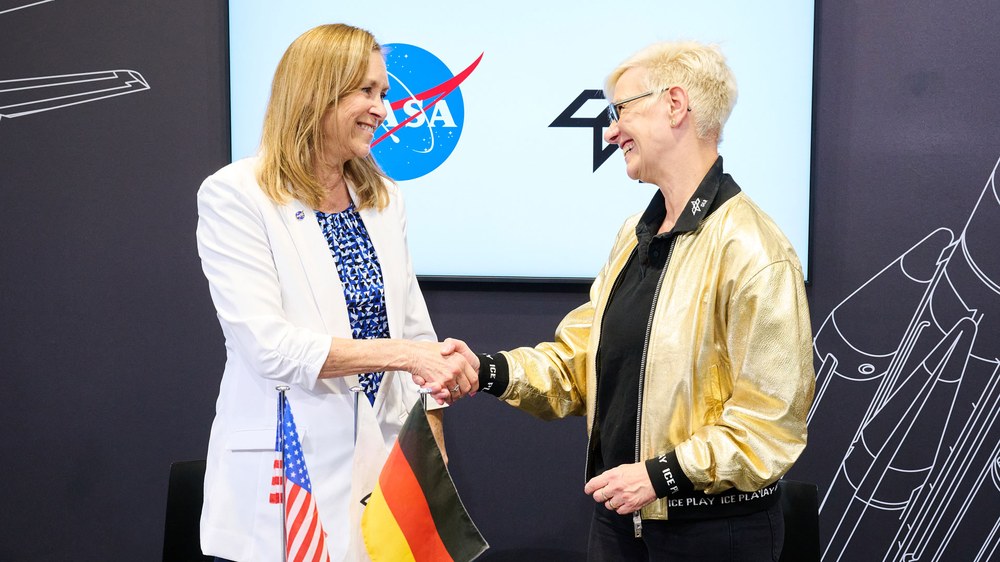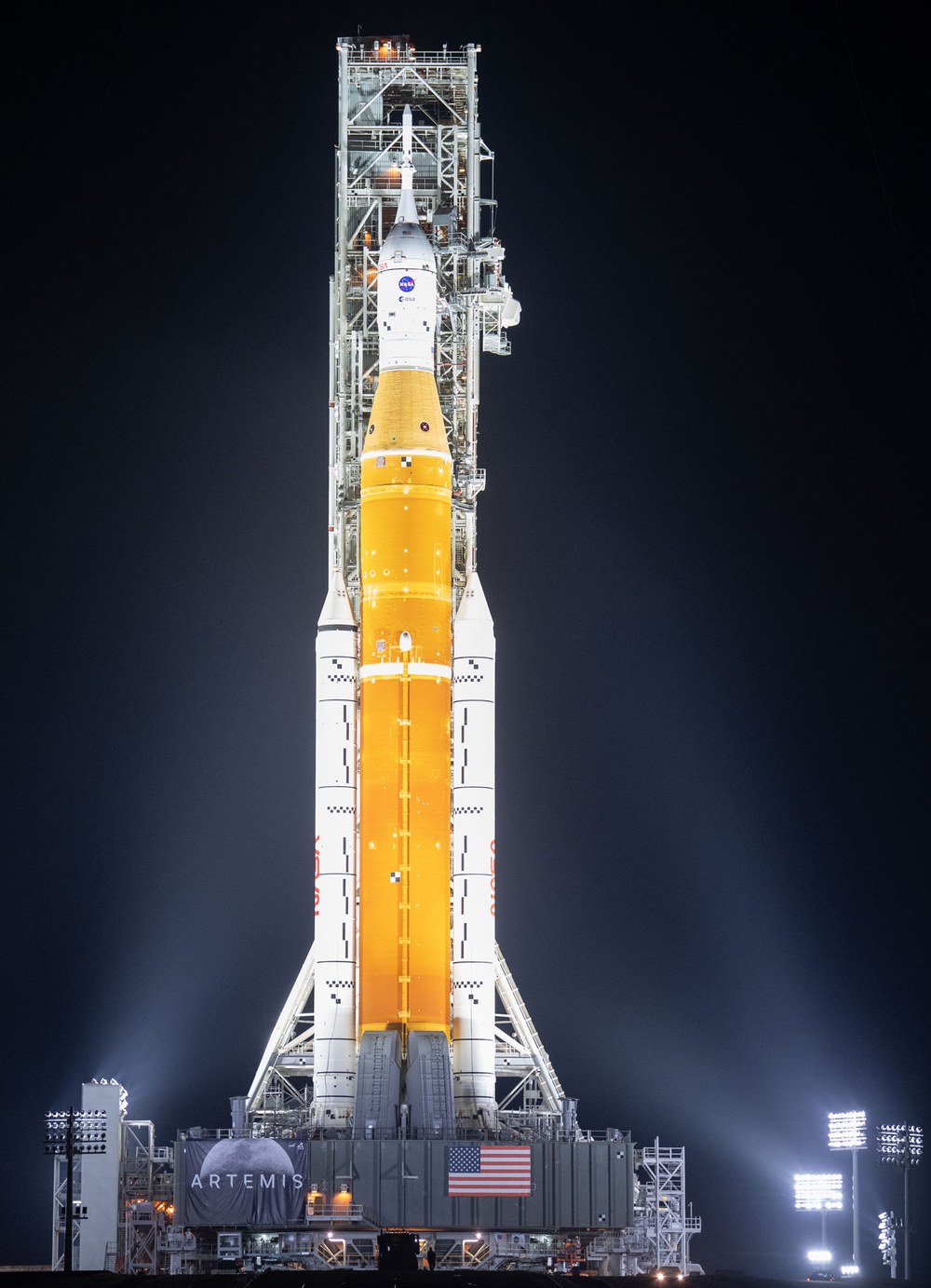DLR and NASA continue joint space radiation research with DLR radiation detector


©NASA
- Space radiation poses a significant health risk during long-duration astronaut missions.
- To develop protective solutions, comprehensive and consistent radiation data is required from beyond low-Earth orbit.
- DLR's reliable M-42 radiation detectors, among others, collected valuable data between Earth and the Moon during the NASA Artemis I mission.
- Artemis II will now use the new extended version of the measuring device.
- Focus: Space exploration, space medicine, space radiation
On 16 June 2025, at the Paris Air Show in Le Bourget, the German Aerospace Center (Deutsches Zentrum für Luft- und Raumfahrt; DLR) and NASA signed an agreement to continue their long-standing and successful cooperation in space medicine research. A key area of focus is space radiation, which poses significant health risks to astronauts – particularly on exploration missions beyond low Earth orbit – increasing the likelihood of radiation-induced cancers and acute radiation sickness. Future astronaut missions are expected to become increasingly long in duration, and to protect them, effective shielding strategies are needed. Having already delivered valuable space-based measurement data on several occasions, DLR's M-42 radiation detector will now be further enhanced as both partners continue their collaboration with the 'M-42 extended' (M-42 EXT).
"To be able to develop effective protective measures against the impact of space radiation on the human body, comprehensive and coherent radiation measurements in open space are essential," says Anke Pagels-Kerp, Divisional Board Member for Space at DLR. "At the end of 2022, Artemis I carried 12,000 passive and 16 active detectors inside the Helga and Zohar mannequins, which flew on board the Orion spacecraft as part of DLR's MARE project. These provided a valuable dataset – the first continuous radiation measurements ever recorded beyond low Earth orbit. We are now excited to take the next step together with NASA and send our upgraded radiation detectors around the Moon on the Artemis II mission."
Artemis II is currently scheduled for launch no later than April 2026 and will be the first Orion mission to carry a human crew. Four of DLR's newly developed M-42 EXT radiation measurement instruments will be on board during the planned ten-day lunar flyby.
"In keeping with the historic agreements NASA has made with various international partners as part of Artemis, I am pleased to sign this important new NASA-DLR joint agreement today, committing to the integration of German radiation detectors on Artemis II," said acting NASA administrator Janet Petro. "The German Aerospace Center has been a valuable partner in Artemis, having previously worked with NASA to test technologies critical for our understanding of the effects of radiation on humans aboard the Orion spacecraft during Artemis I and providing a CubeSat as part of Artemis II. Following a productive meeting between President Trump and German Chancellor Merz earlier this month, I am excited to build upon our great partnership with Germany."
Next generation radiation monitoring – M-42 EXT
M-42 EXT is a significantly upgraded version of the M-42 detector used on Artemis I. Its energy resolution has been improved by a factor of six compared to the units flown on Artemis I, and further adjustments and changes were made to the electronics – such as the use of more powerful batteries.
The MARE space radiation experiment
As part of NASA's Artemis I mission in November and December 2022, two specially constructed manikins – Helga and Zohar – flew to the Moon to measure radiation exposure throughout the entire mission. The 'Luna Twins' were modelled on the female human body and equipped with more than 12,000 passive and 16 active M-42 radiation detectors developed by DLR. NASA also provided 18 of its own radiation detectors to the MARE experiment. While Helga flew unshielded, Zohar wore the newly developed AstroRad protective vest, designed to shield particularly sensitive organs. The M-42 detectors were positioned in the manikins where the most radiation-sensitive organs are found – the lungs, stomach, uterus and bone marrow, as well as on the skin. For the first time, it was possible to measure the difference in radiation exposure with and without the protective vest under real deep-space conditions.
MARE was the most comprehensive radiation experiment conducted to date beyond low Earth orbit, delivering consistent data on both radiation exposure to the female body and radiation levels inside the spacecraft. The findings support better assessments of radiation exposure and health risks and will help develop targeted protective measures – with the goal of enabling safe human spaceflight to the Moon and beyond. MARE is a joint project of DLR, the Israeli company StemRad, NASA, Lockheed Martin and the Israel Space Agency.
Related links
- DLR news: Artemis II – small German satellite to fly to the Moon
- DLR news – M-42 radiation detector flies to the Moon
- DLR news – Orion spacecraft radiation protection tested: initial findings from Artemis I Moon mission
- Background article – The MARE cosmic radiation experiment on board Artemis I
- Featured topic – Artemis Programme
- DLR Institute of Aerospace Medicine

